The headlines are the huge factor that decides whether your readers click on the blog.
Headlines can boost the conversion rate of your blog, or sometimes you might face a sudden drop in CTR.
Let’s understand this thing in this way. You might notice that the main headline of the newspaper is always a piece of hot, spicy news that grabs the sudden attention of people.
It is up to you how you can take advantage of this little thing by spending some time and effort.
The post title is the first and probably the last thing to interact with readers.
David Ogilvy (Famed advertising executive) said that your headlines are read five times as much as your body copy.
This emphasizes the importance of a post title to connect with potential readers and make them stick around your post.
If you face failure in grabbing readers attention, you’ve come to the right place.
Let’s see how you can make a catchy headline. In this article, I’ll take you through each step one by one for creating great headlines.
Why Are Catchy Headlines Important?
At the end of the day, you want to get huge traffic to your site. But it depends greatly on post headlines.
The internet is already overflowing with content. There is millions of content on every topic present on the internet.
Not only that, but some credible websites have already set the standard. So why should people go for your content?
This is a point where great headlines come in. It helps you stand out in the overwhelming number of similar articles.
Headlines are worth more than you think. Every 8 out of 10 people read headlines, and only 2 of them will swoon to the body.
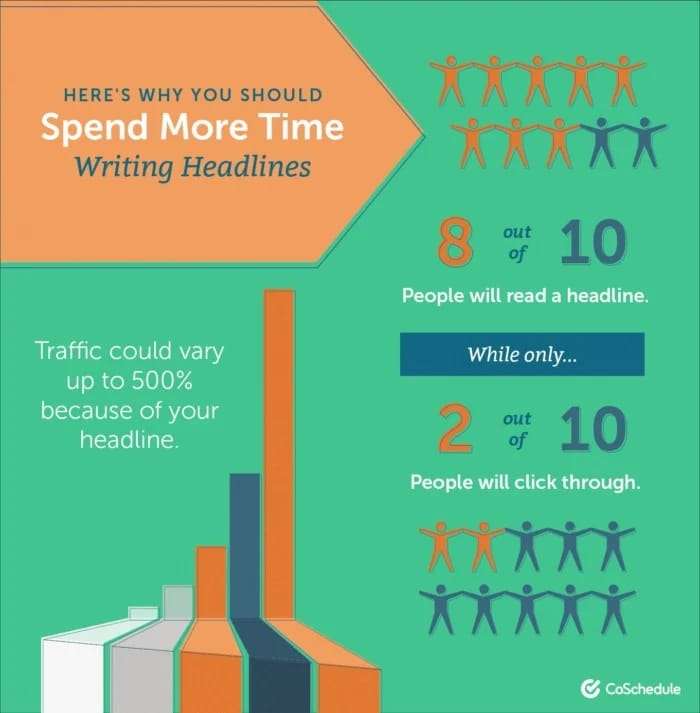
Writing good content is not a ticket to a high click-through rate. People have scanning eyes; they skip your content within seconds if they don’t find it attractive.
Unless your headlines can attract readers, no matter how valuable your content is, all your time and effort will be wasted.
That makes a huge difference in the overall progress of your site.
Smart bloggers and marketers always spend hours choosing the headline of their posts.
For example, The New York Times and Airbnb took more than 45 minutes to curate compelling headlines.
If you want to make your headlines super clickable and irresistible, you have to take it seriously and efficiently work on it.
Blog Title vs. . Blog Headlines:
People are mixing both of these terms and taking them as a single expression. But both are different terminologies and serve different purposes.
The blog title covers a vast area. It creates your blog identity and encompasses the entire content.
For example, if your blog is about food and traveling, your title could be “The Travel Bite” or “Cuisine and Food.”.
It clearly shows that people would expect all about food and travel from your blog.
While blog headlines are the specific phrases you create for a single blog post, It is more specific than the blog title.
For example, “A Spicy Curry Recipe with Louise and Carnous” and “Is Traveling for Only Food the Real Thing?”
Think of it as a title—the name of your crockery store—and headlines—the different items that come under your store.
As far as they are different, the headlines must still resonate with the main blog title.
Your Article Got Viral with Catchy Headlines:
Headlines have the power to drive massive traffic through sharing.
It can increase traffic by up to 500%, but you can also lose 80% of your traffic if your headline is not strong enough.
Among the 7 million published pieces of content per day, very few get shared extensively.
A study by Buffers and CoSchedule tested 1 million headlines and revealed that 89% of the content online does not even reach the 100-share mark.
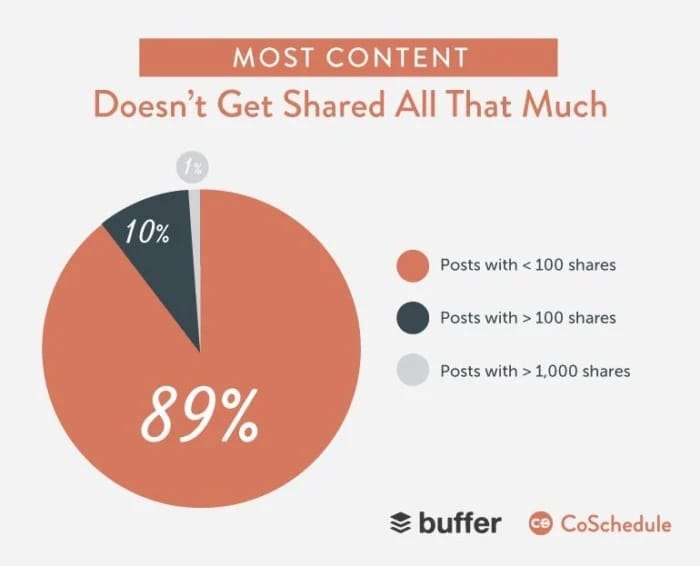
Only 1% of them get shared up to 1000 times, but the question is, how can you be in this 1% and get to share your article by a greater number?
Out of the folks who search for it, about 59% share the article without even reading it. Why?
Because of their eye-catching headlines.
How to Write a Clickable Headline?
State what the article is about:
For sure, there is so much information and data to talk about, but still, you have to state the main subject of your blog post.
Make headlines that are obvious and easy to understand. It must be articulated in a clear way so the reader will immediately get to know what the article is about.
For example,
- “Master public speaking in 10 easy ways.”
- “How do I learn human psychology?”
Before you move further, I want to clear up one more thing. I have seen so many headlines that demonstrate a sense of urgency and cleverness, but they got zero ROI due to a lack of clarity.
Sure, these headlines intrigue, but these tactics backfire when people do not clearly understand what the main point of your content is. Of course, no one will click on vague and confusing headlines.
Use simple and easy-to-understand words. Don’t go for fancy words to give your post an intriguing look.
See the landing page of IAG Media? The headline is simple, easy, and conveying.
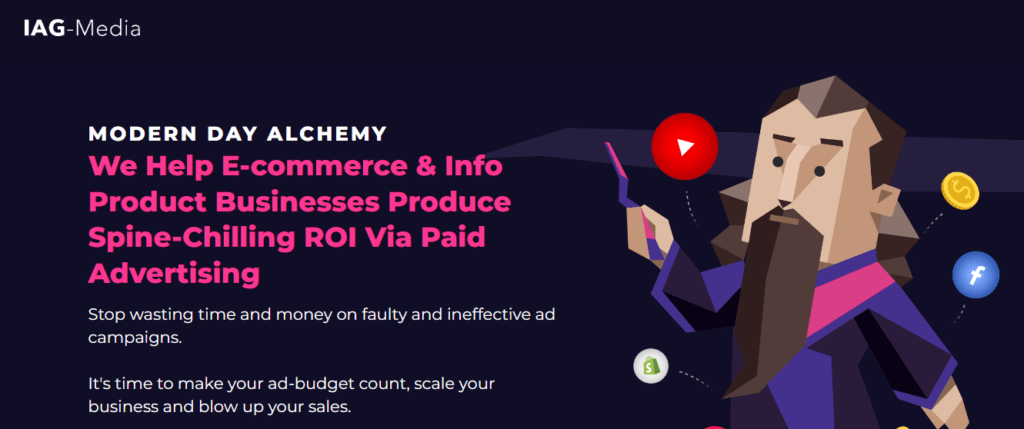
Address a Specific Question:
Half of the searches online start with a question about a specific topic. People want to get educated and learn about new and innovative things.
Successful bloggers often use how- and what-like words with the rest of the phrases.
A study shows that headlines with questions lead to a higher number of clicks.
But you cannot always use how and why to entice readers effectively. You need some spice in your title to grab the reader’s attention.
For example, “How to get rid of 9 to 5 jobs in half a year?
Psychology says that a question activates the reader’s mind, and they subconsciously start to find the answer and become more curious about the conclusion.
It directly hits the reader’s curiosity and sparks the light of the detective mind.
Remember the 5Ws and 1H while making headlines.
- Who
- What
- Where
- When
- Why
- How
This technique not only helps you write effective headlines that pose specific questions but also gathers all the factual information.
Let’s use them and make some interesting headlines. For example,
- Who else wants the 6-step master guide to SEO?
- How do I get rid of belly bloat in a week?
- What will AI do in the future?
- When should you invest in digital courses?
- Why does your cat act weird sometimes?
- Where can I watch the Money Heist movie online?
Use Rationale:
Rationale means you are highlighting the reason why things have to be done. Simply put, you are giving the reason people click on your article.
The human brain always craves innovative perspectives. Do you think your headline has enough potential to stop the scrolling thumb?
A unique rationale evokes a sense of creativity and intrigues people.
Here is a list of some effective rationales that you can use in your headlines.
- Tips
- Lessons
- Secrets
- Ways
- Facts
- Insights
- Principles
- Techniques
- Statistics
- Ideas
- Tricks
- Reasons
- Strategies
- Steps
For example,
- 10 Lessons from the Alchemist
- 8 Tips to Lose Weight
- 3 major facts about Queen Victoria
- The New Realities of the AI World
- Common Challenges Faced by a Newborn Mother
- 7 Pros and Cons of Using the Internet
Add Listing, Numbers, and Digits:
Specific numbers and data make for a promising headline. This means that whenever a person lands on your blog with a specific number in mind, it directly promises them computable information.
For example, “21 Ways to Remove the Negative from Your Mind.” This shows us how much we can expect from this article.
Writing headlines is related to mental psychology to some extent. It’s like making a web to bind the reader’s mind to it.
Using numbers and digits is the best way to make your headlines compelling. Believe it or not, some bloggers are not so good at making headlines, so numbers headlines are best for them.
It also makes the reader clear and acts as eye candy that is enough to hold the moving eyes. According to research by Conductors, headlines with numbers are the most read and effective headlines.
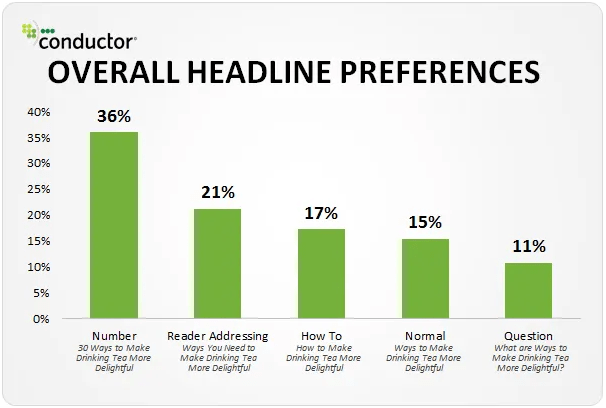
According to the Content Marketing Institute, the brain is more likely to believe in odd numbers than even numbers. You also might see that the majority of number headlines start with the odd numbers 7, 9, 21, etc.
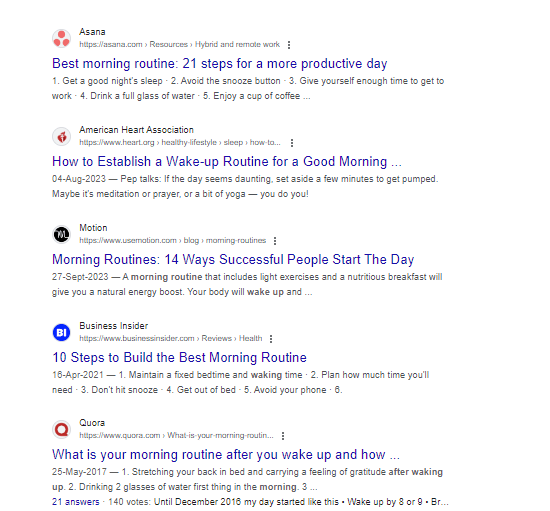
The last and most important tip is to try to wrap your article in 9 steps because the human brain can digest the 9 steps easily. The brain typically struggles with the larger number, but you test and use it if it works best for you.
Utilize Interesting Adjectives:
Sometimes descriptive headlines bored the reader and did not entice them. You need some emotive and fun adjectives to bring your audience along with the whole article.
Advertising tycoon David Ogilvy said that headlines are the single most critical part of ad copy. He also said that writing headlines is like spending 80 cents out of one dollar.

To make the 80 cents worth it, you need to pay close attention to it. As a content writer, if you can’t make catchy headlines, you will never stand out in this noisy world.
You need some magical words that excite your readers. Here is a list of some fun adjectives by Jeff Groin, so you can select and allure your headlines.
- Effortless
- Painstaking
- Fun
- Free
- Incredible
- Essential
- Absolute
- Strange
Here is an example of a headline using the adjectives “fun” and “unusual” to make it interesting.
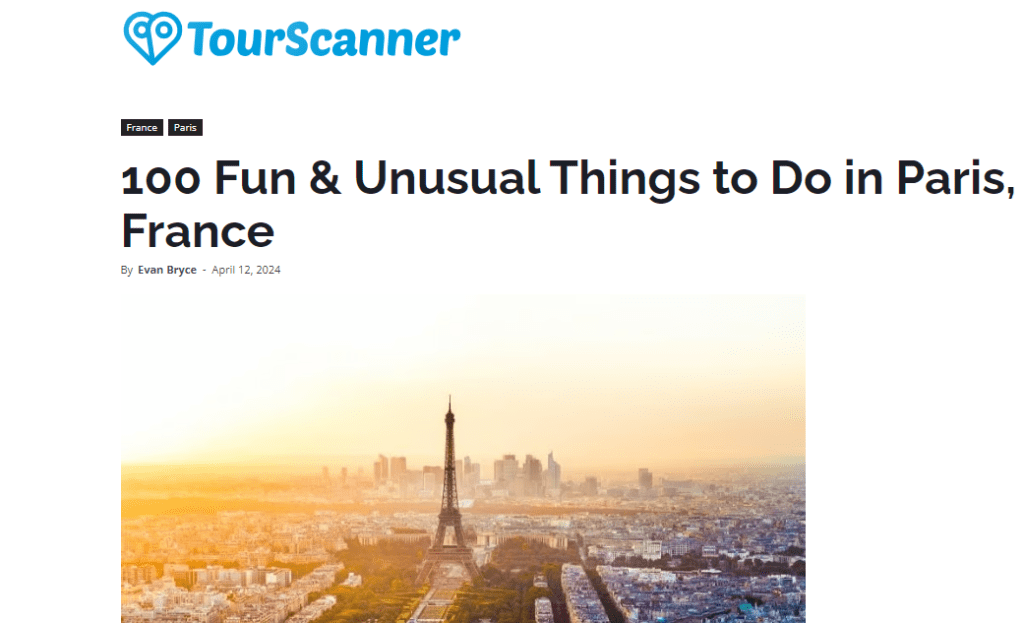
Must Add Keyword:
Keywords are the real players in your headlines. Keywords are the search terms that people use to get educated about some concepts.
Use your primary keyword at the start or close to the beginning of headlines. It enhances clarity and relevancy and also makes it easy for readers to understand.
In simple words, you can say that it is the best and most effective position to place your main keyword.
First, find the right keyword with the help of free keyword research tools. Google Keyword Planner, Moz Keyword Explorer, SEMrush, etc.
Utilize those keywords in a natural way; don’t just throw the keywords. Try to use only one main keyword to avoid keyword stuffing.
Create a Sense of Urgency:
“The best marketing doesn’t feel like marketing. It feels like urgency. It feels like a need. It feels like the solution to a problem you’ve been yearning for.” Jay Baer, Social Media Strategist and Author.
When you imply urgency, your readers know that if they don’t grab it now, they will miss it out.
Otherwise, they will bookmark or save it for later and never return it.
Urgency has a very great impact on not only conversions but also on the SEO ranking. It makes your content more clickable and shareable, and people will be more likely to interact.
Let’s understand a little bit about the psychology behind creating urgency.
Our brain releases a hormone called cortisol under stress and triggers the person, which makes them more focused and motivated to take action.
That is why creating urgency is a powerful technique for marketers to produce excellent results.
Words like hurry, last chance, before it’s gone, urgent, expire soon, and 2 spots left only push your audience to take action fast.
Also, some evidence shows that using the reviews and positive testimonials of your happy customers creates a sense of urgency and makes them think that they could lose this golden opportunity.
Address the Readers Directly:
Addressing the reader directly is the most common and basic technique used by bloggers. I’ve personally tested this technique, and it works excellently for me.
Copywriter Dan Kennedy introduced the technique called “flagging technique” to write headlines that directly speak to the audience.
We are living in a noisy world, and to make your content stand out in this noise, this technique is the most powerful way to connect with your readers.
When you address them as “you,” it connects your readers on a personal scale and brings emotions.
Emotions are very powerful.
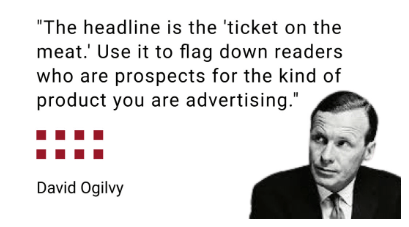
For example,
- 16 Ways to Boost Immunity
- Blogger’s Words: 9 Ways to Skyrocket Your Conversions.
- 7 Habits That Will Make You Rich in Your Teenage
Call to Attention:
The headline is made to get attention otherwise, people will easily leave and jump to another site.
People on the internet encounter a number of ads, articles, and blogs in a day, but those whose headlines are catchy with a powerful CTA get the most attention
B2B and B2C marketers generally spend more time making headlines powerful, so they don’t miss out on the chance of grabbing attention.
If your headline is attracting people, that means it is accomplishing the goal of the headline excellently.
Play with words in Headline:
Smart marketers know how to play with words and entice readers. Brainstorm to get a bunch of headlines.
After making a list of at least 10 headlines on a single topic, it’s time to play the game of testing and tweaking.
Test every headline, track the performance, and see what kind of headline works best for you.
Try to make every headline different in structure so you can test and gather a wide range of results.
For example, the headlines for articles related to sleep can go with “Don’t let your sleep schedule go, Haywire” and “Your sleep schedule will decide your body strength.”.
Tracking performance is crucial because it is not possible that the headline that works for me the best also does the same for you.
For example, in the picture below, all the articles talk about the same thing, “morning routine,” but the gatekeepers (headlines) are different.

Provide Strong Value:
Good headlines attract readers, but great headlines make them quick-clickable. How can you identify whether your headlines are great or not?
Well, the great headlines always follow the simple rule of 4 U’s.
- Uniqueness
- Ultra-specific
- Urgency
- Useful
If your headlines contain all these elements, it is good to go and will skyrocket your results.
Let’s say your headline is pretty good but doesn’t provide any value. Why will readers click? Here is the point where all these factors backfire.
You need to make your headline and content valuable, useful, and informative so that they pinpoint your reader’s problem and provide an ultimate solution.
Write in depth so it will cover every aspect and leave the reader happy and satisfied.
Create Eye-Catching and Unique Title:
As I already mentioned, one of the four U’s of writing headlines is ultra-specific. Simply means you have to create headlines different from others.
Bring curiosity and excitement to your readers by keeping the line straight between clarity and uniqueness.
For example, instead of “Learn how to budget,” use “Are you running out of budget every month?”
Sometimes it becomes hard to make the title stand out in the crowd. But you write it little by little, thinking about what your readers want and how to answer them more precisely.
We are writing for human beings whose span of attention is less than a goldfish, so avoid vague words and don’t confuse your readers.
The key tip is to prove that your content is valuable and essential.
After writing, you have to check whether it is unique or not because many people are targeting the same keyword, so it might be possible that you get the same headlines.
Close your headline with double quotation marks and plug it into the Google search bar.
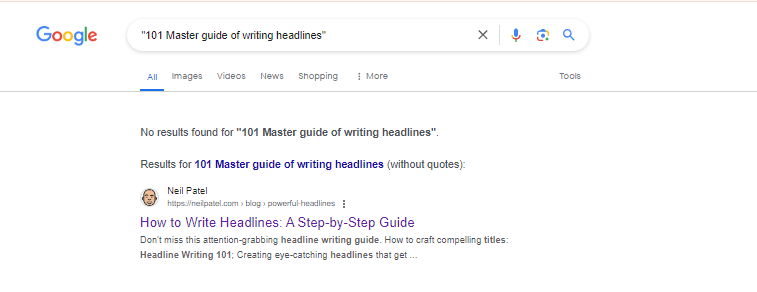
Be Clear and Concise:
We already discussed this above, but I am going to write it here again because it is one of the most important points to keep in mind.
People are not going to read your clumsy, fat headline until it makes it clear what your content is about.
No matter how great your content is, until the headline makes any sense, it is all wasted.
For example, look at the below example of how simple and clearly they articulate the headlines.
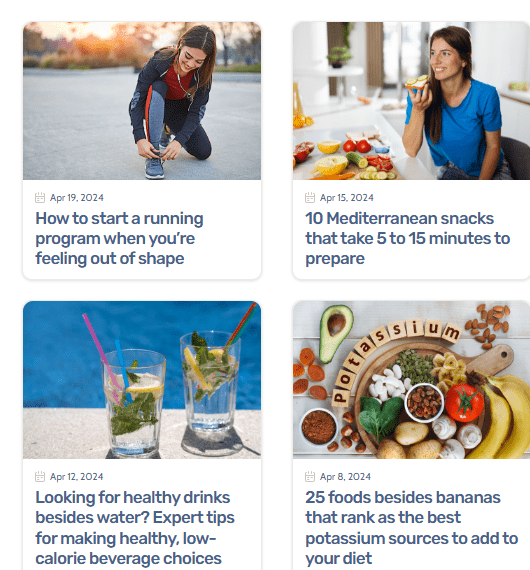
Use the Standard Formula for Headlines:
To write a quick clickable headline, you need to have a specific formula so every time you start to write, you can lean on it.
But unfortunately, there is no one standard formula. Every content writer and blogger has their own formula, and I have mine.
Whenever I am supposed to make classy headlines, I make sure that they contain these 4 things.
- S- Simplicity
- U- Uniqueness and Urgency
- V- Valuable
- I- Informative
These 4 things make together the best headlines for me. You can either consider my formula or make your own by testing different structures.
Use Images That Give the Strong Visual Clue of the Article:
Headlines are the gatekeepers of your content and probably the only way to get your readers to the site. But what if I told you that visuals are more powerful than headlines?
Yes, images are incredibly powerful, and luckily, social media channels like Facebook, Instagram, Twitter, and Pinterest introduced the feature of adding images with the main titles.
It is big news for visual lovers. While choosing images, be careful; don’t just pick them randomly and link to the headline.
As Buffer says, you can’t just use any old image to complement your headline. Add images that complement your title and strengthen the content.
For example, if your headline is “What effect does caffeine produce on your body?” then the image must resonate with it, not just a random irrelevant image.
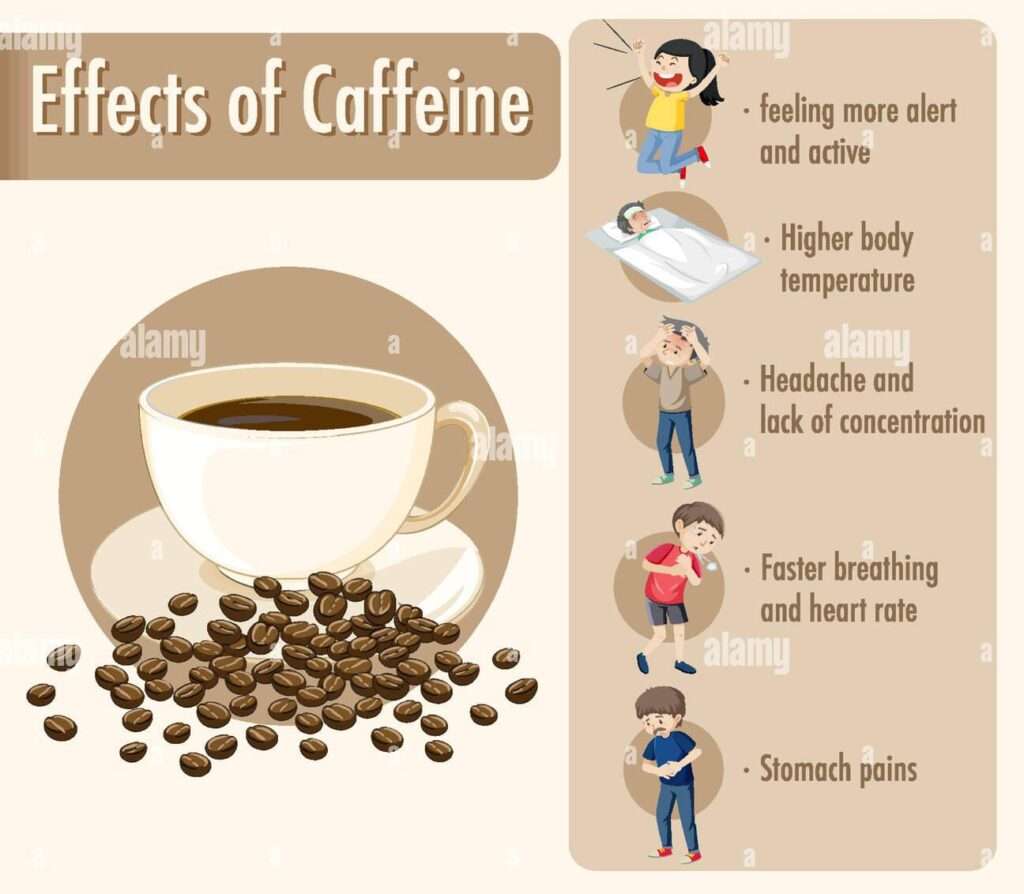
Use Emotional Words:
Emotions are equal to power. Some words have the power to make your headline seductive.
This is also called “Power Words.” It gives readers a pep talk and entices them to take action.
For example, here are some examples of headlines that trigger emotions.
- Conquer your finances in 6 Proven Steps
- Inner Genius: 9 Powerful Habits of Newton That Supercharge Your Energy
- Effortless Weight Loss: Transform Your Figure and Your Life
- (Image by emotional)
Be aware that power words are only meant to trigger and engage readers. Its only purpose is to boost conversion, not to manipulate and deceive people.
Here is the list of “power words” by CoSchedule, so you can inspire your audience in a better way.
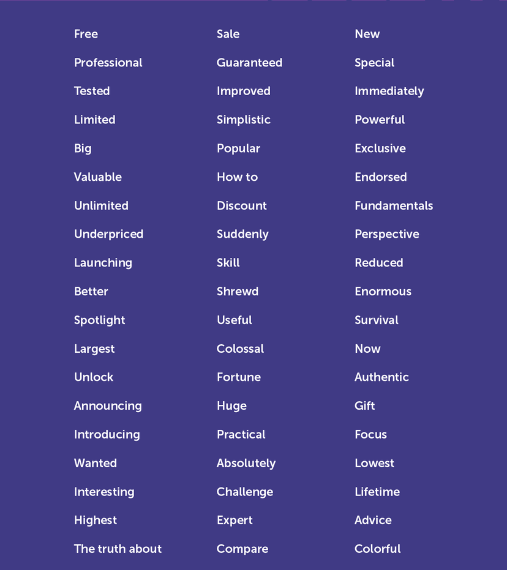
Analyze Your Headline Performance:
After mastering how to write a perfect headline, it’s time to measure your headline’s performance. How well does it go?
I already told you you could achieve a huge number with just one try; you needed to test many times, and then finally you got to the right point.
For this, you have to track the progress, make a list of points that are performing well, and identify the clickbaits.
It helps you maximize your performance without wasting any time or effort.
Frequently Asked Questions:
What should be the length of an effective headline?
In general, you can use headlines long or short according to your own preference, but the sweet spot for this is 50–60 characters if you want it to be cut down. Google only shows the first 50–60 characters of the headline. Sometimes marketers use long headlines, but at the end, they leave the reader unclear and confused. To avoid this, make sure you don’t exceed the character limit of 50–60.
What should not be used in headlines?
If you are really serious about mastering this skill, the first and most important thing to pay attention to is using easy and simple wording. The more complex and fancy words you use, the more your readers will be confused and leave the site immediately. So try to make headlines as simple as you can, easy to understand, and valuable as possible.
What are the most important factors for headlines?
Well, every point mentioned above is important, but the 4 U’s—uniqueness, urgency, ultra-specificity, and usefulness—act as the backbone of headlines. If you master this, you already have a high conversion ticket.
Final Thoughts About Headlines:
As the marketing world is changing day by day to become more advanced and helpful, it becomes necessary to think about how we can stand apart from the rest.
Everyone knows the importance of content and headlines, but tactics to interact with audiences and boost conversions are emerging every day.
That’s why it is essential to have the roots so you can work on them and take your site to another level.
Once you get your readers inside the content, it is easy to stick them along with the entire story. Make sure your content has enough potential to compel the reader positively.
I hope you learn how to write catchy headlines and collaborate with the audience. I try my best to add everything you need to know about it.
Best of Luck!
Do you have any useful tips for writing headlines? If then mention it in the comments below.
